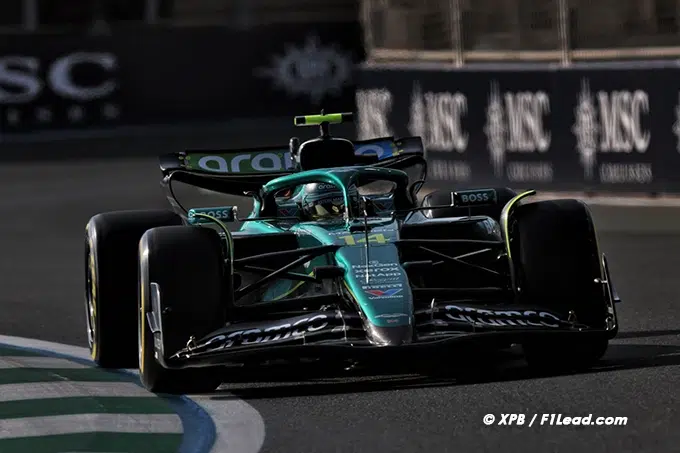Aston Martin F1 gears up for 2026 with new technology, hoping to revolutionize performance and challenge the competition in the upcoming season.
Aston Martin F1 has struggled to keep up with the competition year after year. The team has already written off 2025, focusing instead on the upcoming regulatory changes set for 2026. The 2025 season is shaping up to be a transitional year, one that may test the team’s patience and resilience.
“We’re not satisfied with the car’s performance,” admits Andy Cowell, CEO of Aston Martin F1. “We want it to be faster. We’d love to score points at every race. The team is highly ambitious. But it’s a complex challenge—there are so many systems at play, from tires to aerodynamics, and everything in between. Mastering it all is extremely difficult.”
Cowell explains that the performance gaps between teams are razor-thin, making every detail crucial. “The margins are very small. Getting the tires into the right window, managing them across both axles during a lap in qualifying is one thing, but doing it consistently during a race is incredibly tough.”
He goes on to explain the minute elements that affect performance but are often hard to pinpoint. “In aerodynamics, we use CFD and a wind tunnel at our campus, but then we build a full-size car and put it on track. Understanding the load on each axle at a track like Bahrain, which is very bumpy, compared to a smooth, fast circuit like Saudi Arabia, the aerodynamic response changes with each circuit. We try to measure it, but it’s not as precise as in the wind tunnel.”
“Bringing all these pieces together… it’s amazing how close the cars are despite the different groups of aerodynamicists, engineers, management styles, tools, and drivers. We’re in the final year of this regulation cycle, and it’s incredibly tight.”
As a relatively young team, Aston Martin F1 is focused on refining its tools, understanding its strengths, and moving beyond mere survival to genuine success. “There are many areas where, if we could go back to the start of the year with the same car, we would perform better at every race. That gives us hope. There are simple improvements to make, but also extremely complex things to master.”
Eyes on 2026 for Aston Martin F1
On paper, Aston Martin F1 has the right resources to succeed. The team has a new factory, a new simulator, and a new wind tunnel, which started operations just last month. Will it be ready to make a real impact on next year’s car?
“Since the Melbourne weekend, we’ve been using the wind tunnel. We’re using it for both aerodynamic development for 2026 and 2025,” Cowell confirms. “We’ve transitioned to this wind tunnel, and materials are starting to come out; we’ll see them on track in the coming races.”
“People often say, ‘having two watches but not knowing the time.’ That’s a bit like comparing aerodynamic loads between two different wind tunnels—they’ll never give you exactly the same reading. But we’re happy with the new wind tunnel. It’s opened our eyes to some key characteristics. Now, the job is to do the work. With a new testing tool that gives us a clearer, more representative view, we need to continue aerodynamic development—shaping parts, producing components, understanding, and then manufacturing full-size parts, testing them on track, and measuring in a complex environment.”
“We’re in that process, leveraging the new tool, and we’re excited to turn it into a faster racing car.”
Having previously headed the engine division at Mercedes F1, Cowell was brought in by Aston Martin F1 for his experience navigating a major engine regulation change.
As teams look ahead to the new 2026 engine regulations, some engineers are concerned about the viability of the new rules—set to be enforced next year and remain in place until at least 2029. How can Aston Martin F1 and Honda maximize this opportunity, potentially surprising the field next year as the regulatory landscape shifts? Does Cowell share the concerns surrounding the 2026 regulations?
“Developing a power unit is very complex. It’s not just about mechanical power, or batteries, or thermal management. All these factors are interrelated. You have to make compromises to achieve the fastest car possible.”
“We’re still months away from the deadline. I’m sure every engineering team is looking at what they have and thinking, ‘I have all these performance ideas. How do I integrate them?’ Then, reliability issues will emerge—how do we solve them? The supply chain will be under pressure because you’re asking for both performance and reliability.”
“You have to push incredibly hard—every minute counts. And there are still many minutes left before the first race. A team that’s ahead today could fall behind. One that’s behind could catch up. But how do you measure that? Ultimately, it will be in Melbourne 2026, during qualifying, that we’ll truly see where everyone stands— with the different types of cars, the new power units, the new aerodynamics, the new tires, and everything else. The stopwatch will determine where each team is.”

- Discover More>Saudi Arabian Grand Prix F1: Norris Surpasses Piastri in FP3
- Follow us on >FACEBOOK and >TWITTERfor F1 update
Aston Martin F1’s Bold Move Toward 2026: Winds of Change Aston Martin F1’s Bold Move Toward 2026: Winds of Change
